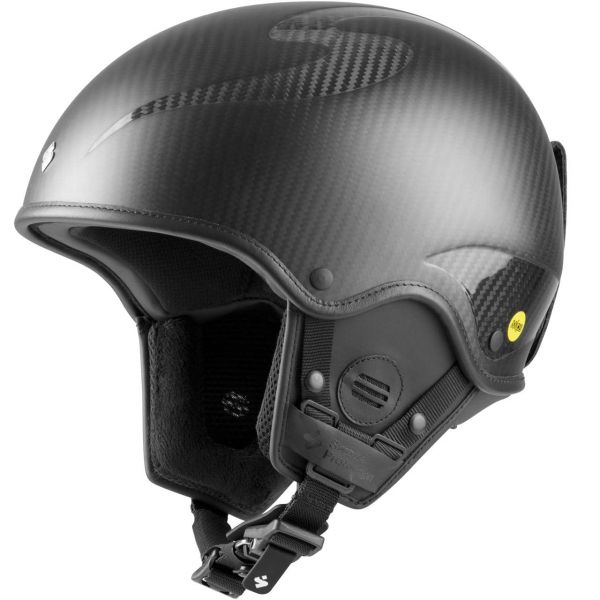| Switch to the country shop | ||||
 Germany Germany |
||||
 English English |
||||
 Austria Austria |
||||
 Switzerland Switzerland |
||||
 Netherlands Netherlands |
||||
 Italy Italy |
||||
 France France |
||||
 Czech Republic Czech Republic |
||||
| Season: | 2023/24 |
| Helmet category by age/gender: | Unisex |
| Construction: | Half Shell, Audio system compatible |
| colour: | carbon |

The helmets of the Rooster Limited Edition (LE) are extraordinary and exclusive models with exquisite lacquering and details - all handmade! This is a racing helmet with Sweet's carbon fiber reinforced prepeg polymer shell, which offers incredible strength and impact resistance with a low and elegant profile. This model is equipped with MIPS and a Comfort Liner.
MIPS SYSTEM
MIPS mimics the protection system of our brain In the event of an impact at an angle, the helmet shell slides over the low-friction MIPS intermediate layer.
The result: less rotational stress on the brain.
The results of in-depth studies have shown that helmets with MIPS technology significantly reduce the loads that occur when an impact occurs at an angle. MIPS does not affect design or shape, comfort or performance. You don't even feel that you are wearing a helmet with MIPS! But in the event of a fall, the helmet slips minimally over the MIPS intermediate layer during the impact, reducing rotational stress on the brain.
Funktionale Cookies sind für die Funktionalität des Webshops unbedingt erforderlich. Diese Cookies ordnen Ihrem Browser eine eindeutige zufällige ID zu damit Ihr ungehindertes Einkaufserlebnis über mehrere Seitenaufrufe hinweg gewährleistet werden kann.
Marketing Cookies dienen dazu Werbeanzeigen auf der Webseite zielgerichtet und individuell über mehrere Seitenaufrufe und Browsersitzungen zu schalten.
Tracking Cookies helfen dem Shopbetreiber Informationen über das Verhalten von Nutzern auf ihrer Webseite zu sammeln und auszuwerten.
Diese Cookies werden genutzt zur Erhebung und Verarbeitung von Informationen über die Verwendung der Webseite von Nutzern, um anschließend Werbung und/oder Inhalte in anderen Zusammenhängen, in weiterer Folge zu personalisieren.
